
Tiziano Vecelli or Vecellio, known in English as Titian, was an Italian (Venetian) painter of the Renaissance, considered the most important member of the 16th-century Venetian school. He was born in Pieve di Cadore, near Belluno. During his lifetime he was often called da Cadore, 'from Cadore', taken from his native region.

The Prado Museum, officially known as Museo Nacional del Prado, is the main Spanish national art museum, located in central Madrid. It is widely considered to house one of the world's finest collections of European art, dating from the 12th century to the early 20th century, based on the former Spanish royal collection, and the single best collection of Spanish art. Founded as a museum of paintings and sculpture in 1819, it also contains important collections of other types of works. The Prado Museum is one of the most visited sites in the world and is considered one of the greatest art museums in the world. The numerous works by Francisco Goya, the single most extensively represented artist, as well as by Hieronymus Bosch, El Greco, Peter Paul Rubens, Titian, and Diego Velázquez, are some of the highlights of the collection. Velázquez and his keen eye and sensibility were also responsible for bringing much of the museum's fine collection of Italian masters to Spain, now one of the largest outside Italy.
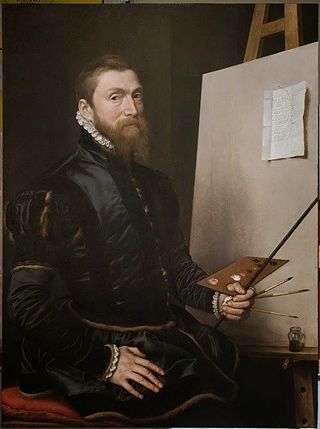
Anthonis Mor, also known as Anthonis Mor van Dashorst and Antonio Moro, was a Netherlandish portrait painter, much in demand by the courts of Europe. He has also been referred to as Antoon, Anthonius, Anthonis or Mor van Dashorst, and as Antonio Moro, António Mouro, Anthony More, etc., but signed most of his portraits as Anthonis Mor.

Alfonso d'Este was Duke of Ferrara during the time of the War of the League of Cambrai.

Alonso Sánchez Coello was an Iberian portrait painter of the Spanish and Portuguese Renaissance. He is mainly known for his portrait paintings executed in a style which combines the objectivity of the Flemish tradition with the sensuality of Venetian painting. He was court painter to Philip II.

Portrait of Don Luis de Góngora is a 1622 painting in oils of the poet Luis de Góngora by Diego Velázquez. It is influenced by Caravaggio, especially in its chiaroscuro, and also applies lessons Velazquez had learned in Italy, such as the rich palette as used by Titian. It is now in the Museum of Fine Arts, Boston. The portrait was commissioned with the assistance of Velázquez's teacher, Francisco Pacheco.
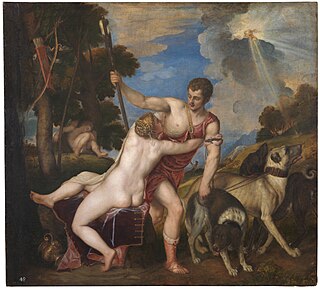
A composition of Venus and Adonis by the Venetian Renaissance artist Titian has been painted a number of times, by Titian himself, by his studio assistants and by others. In all there are some thirty versions that may date from the 16th century, the nudity of Venus undoubtedly accounting for this popularity. It is unclear which of the surviving versions, if any, is the original or prime version, and a matter of debate how much involvement Titian himself had with surviving versions. There is a precise date for only one version, that in the Prado in Madrid, which is documented in correspondence between Titian and Philip II of Spain in 1554. However, this appears to be a later repetition of a composition first painted a considerable time earlier, possibly as early as the 1520s.

Equestrian Portrait of Charles V is an oil-on-canvas painting by the Italian Renaissance artist Titian. Created between April and September 1548 while Titian was at the imperial court of Augsburg, it is a tribute to Charles V, Holy Roman Emperor, following his victory in the April 1547 Battle of Mühlberg against the Protestant armies.
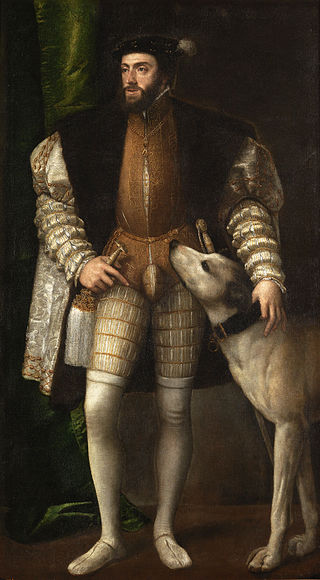
The Portrait of Karl V with a Dog is a portrait of Karl V, Holy Roman Emperor with a hunting dog, painted by Titian in 1533. It passed from Karl to the Spanish royal collection, from which it passed to its present owner, the Prado in Madrid.

The Portrait of Isabella of Portugal is an oil-on-canvas portrait of Isabella of Portugal, Holy Roman Empress by Titian dating to 1548. It was part of the Spanish royal collection and is now in the Museo del Prado in Madrid.

Venus and Musician refers to a series of paintings by the Venetian Renaissance painter Titian.

Alfonso d'Avalos Addressing his Troops is a portrait of Alfonso d'Avalos by Titian, painted in around 1540 and now held at the Museo del Prado in Madrid, Spain. Alfonso d'Avalos, Marquise del Vasto, was a noble Neapolitan, descended from a family of Castilian origin. He participated in the Battle of Pavia and the conquest of Tunis in 1535. In 1538 he was appointed governor of Milan. Military failures caused a subsequent falling out of favor with the Emperor Charles V.
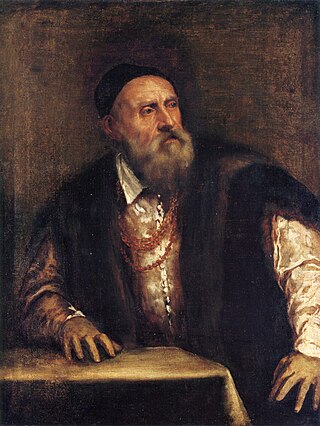
Self-Portrait is an oil on canvas self-portrait by the Venetian painter Titian, dated c. 1546–47. While he painted a number of independent self-portraits in various formats, this is one of only two painted examples to survive. The other is in Madrid, dated c. 1560. Both share a somber and reserved palette, although this example is richer in tonal variation and colour harmonisation.

Portrait of Federico II Gonzaga is a painting by Titian, who signed it Ticianus f.. Today in the Museo del Prado, Madrid, it portrays Federico II, Duke of Mantua who married in 1529; the portrait may have been commissioned for the occasion. The dog, a Maltese, is a symbol of faithfulness.

The Pardo Venus is a painting by the Venetian artist Titian, completed in 1551 and now in the Louvre Museum. It is also known as Jupiter and Antiope, since it seems to show the story of Jupiter and Antiope from Book VI of the Metamorphoses. It is Titian's largest mythological painting, and was the first major mythological painting produced by the artist for Philip II of Spain. It was long kept in the Royal Palace of El Pardo near Madrid, hence its usual name; whether Venus is actually represented is uncertain. It later belonged to the English and French royal collections.

Portrait of a Young Nobleman is a 1600–1605 oil on canvas portrait by El Greco, originally in the quinta del Duque del Arco at the Royal Palace of El Pardo in Madrid but now in the Museo del Prado. It was long thought to show the poet Baltasar Elisio de Medinilla, but this has been disproven, and its subject is now unknown. It appears to have been influenced by portraits by Titian and Tintoretto, who El Greco knew whilst in Venice.

The Spanish royal collection of art was almost entirely built up by the monarchs of the Habsburg family who ruled Spain from 1516 to 1700, and then the Bourbons. They included a number of kings with a serious interest in the arts, who were patrons of a series of major artists: Charles V and Philip II were patrons of Titian, Philip IV appointed Velázquez as court painter, and Goya had a similar role at the court of Charles IV.

Salome, also known as Salome with the Head of John the Baptist, is an oil painting by the Venetian painter Titian, made in about 1550, and currently in the collection of the Museo del Prado in Madrid. It is not to be confused with other compositions of Salome and Judith by Titian.
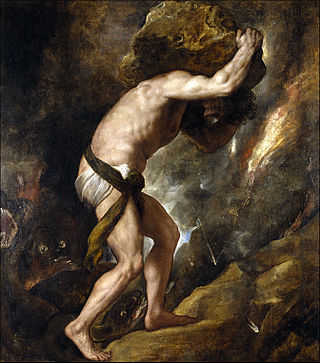
Sisyphus is an oil painting by the Venetian master Titian, made in 1548 or 1549. It is in the collection of the Museo del Prado in Madrid.
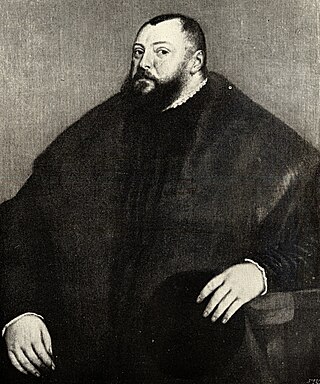
Portrait of John Frederick I, Elector of Saxony is an oil painting by the Venetian painter Titian, made in late 1550 or early 1551. The painting is in the collection of the Kunsthistorisches Museum in Vienna.



















